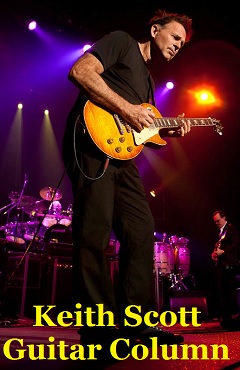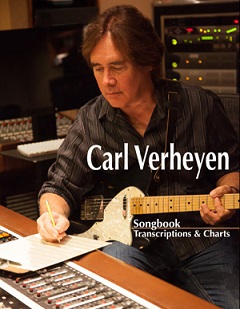Steve Hackett
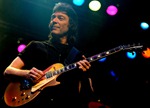
Photo : Lee Millward
Steve Hackett has just released his second album for the Genesis Revisited project, titled “Genesis Revisited II”. This second album also features a number of guest musicians, creating a great tribute to the legendary Genesis music. This album not only appeals to the long time Genesis fans, but also to listeners that have not yet experienced the tremendous world of music created by Genesis. Steve talks to MUSE ON MUSE about the new album.
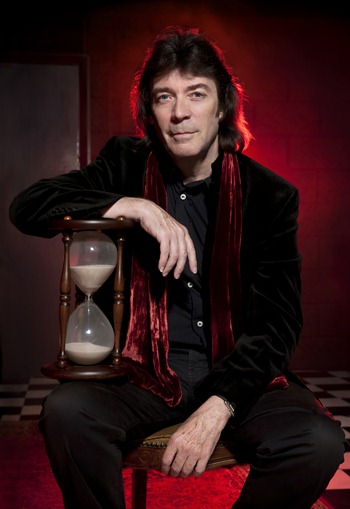
Photo : Tina Korhonen
Interview / Text Mamoru Moriyama
Translation Louis Sesto (EAGLETAIL MUSIC)
Muse On Muse : “Genesis Revisited II”, the sequel to “Genesis Revisited I”, is now released and has appeared on the UK charts at #24. The album seems to be well welcomed. How has the response been?
Steve Hackett : The response has been overwhelmingly positive. I’m thrilled by the reaction and people are intrigued by my re-working of those early songs.
MM : You have probably been asked previously upon release of the 1st Genesis Revisited album, but can you tell us about the background on how and why you decided to re-record Genesis material?
SH : I have always loved the music we did at that time. I really wanted to be able to re-work and enlarge some of those pieces with today’s technology and my own personal take on the tracks. For instance, the first track has nylon guitar introduction and real orchestra instead of mellotron. The guitar parts are sustained further thanks to Japanese guitars, Fernandes.
MM : “Genesis Revisited I” contained 11 songs, whereas “Genesis Revisited II” is a double CD package with 21 songs. How did you decide on what songs to record on this album?
SH : I chose my favourites and also those that featured guitar most strongly.
MM : Genesis music has been loved by fans for a very long time. What was your approach to this particular recording where you re-recorded such classic material, both in terms of music and sound production, in order to appeal to the classic fans?
SH : I kept the arrangements authentic, but I went for total immersion with new devices and I aimed to heighten the detail to enable to the tracks to fly. I wanted to honour the true spirit of the originals while also bringing them to life in a fresh way.
MM : In the process of re-recording classic Genesis material, were you able to find any new discoveries?
SH : I was able to balance the instruments far more carefully. The players and singers were all in tune with my dream for this. We wanted to so the early ideas justice while finding new ways. There were several new discoveries. For instance, in Chamber of 32 Doors I hooked up three fuzz boxes in series to make the sound really resonate like a distant angry scream. I discovered that you could use amp plug-ins instead of deafening the team to get the sounds. I discovered that reverb on the guitar could give the sound a ghostly effect, full of angst but contained like a genii in a lamp. I was able to conjour with perspectives. It’s infinitely detailed.
MM : We see a lot of musicians participating in the recording. How did the recording sessions proceed?
SH : Many people worked at home and sent their parts tome when they were happy with them. Roger and I then worked on blending the sounds and vocals.
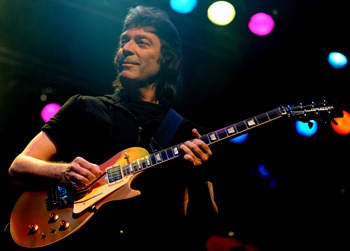
Photo : Lee Millward
MM : The introduction to “The Chamber of 32 Doors” starts out with a nylon string guitar. This sounds very impressive.
SH : The approach is a cross between classical, jazz and flamenco. I was aiming to create the sound of swirling water. Also there is a sense of a whole orchestra within the guitar.
MM : Francis Dunnery from IT BITES and Mikael Akerfeldt from OPETH take part in the epic “Supper’s Ready”. How did Francis and Mikael end up playing on this song?
SH : Francis was already working with Dave Kerzner who recommended him for the project as a singer, and he did a terrific job. I heard Mikael Akerfeldt’s voice when he was working with Steven Wilson and I liked it immediately. Both Francis and Mikael are soulfull in different ways and their love for the Genesis music shines through.
MM : Simon Collins (son of Phil Collins) also takes part in this song. Can you tell us a bit about him?
SH : I worked some years ago with Simon and realized he was a huge talent like his father. It’s great that he’s coming into his own now.
MM : Nik Kershaw takes part in the song “The Lamia”. How did Nik end up playing on this song?
SH : I was introduced to him by Nick Beggs. I think he has a terrific voice and he gives the Lamia a whole new perspective with a deep emotional resonance.
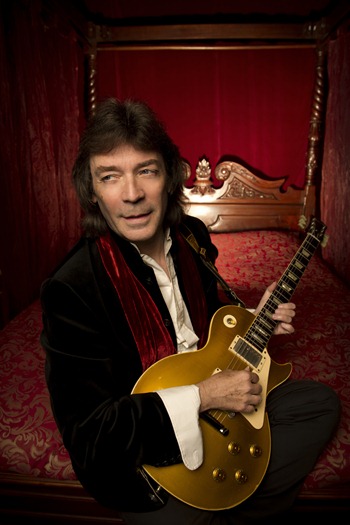
Photo : Tina Korhonen
MM : Every musician participating on the album seems to maintain a good portion of their uniqueness and character, while at the same time contributing to the original concept of each tune. Was there anything you kept in mind while recording the album in regards to maintaining a good mix between each musician’s character and the originality from the classic Genesis songs?
SH : It was important for me to choose gifted performers who loved the music in the first place. I knew then that they would give the work new fire whilst remaining sensitive to its origins. I had the same approach with my own playing.
MM : “Please Don’t Touch” is a great instrumental song taken from your solo album. You also use this song as a main theme on the GTR album. Is this song particularly special to you? Why did you decide to re-record this tune for this album?
SH : This song is one of my favourite melodies in rock and it’s linked to Genesis as we originally rehearsed it in connection with Wot Gorrila. The harmonies of Please Don’t Touch are influenced by Oriental music and it was one of the songs I really wanted to do at the point I left the band. It was the flagship for my solo career.
MM : Steve Rothery plays on “The Lamia”, Roine Stolt plays on “The Return of the Giant Hogweed”, and Steven Wilson plays on “Shadow of the Hierophant”. What is the reason behind having other guitar players beside yourself taking part on the album?
SH : Because I feel that they are all both terrific players and great conceptual thinkers and they contribute strongly to the overall feel of the album. We all influence and learn from each other.
MM : Amanda Lehmann sings on “Ripples” and “Shadow of the Hierophant”. Her voice seems to match perfectly with vibe of the song. What do you think?
SH : I think Amanda has a beautiful Chameleon like voice and she is capable of singing in many styles. I like the contrast she provides and I think she has a beautiful timbre to her voice.
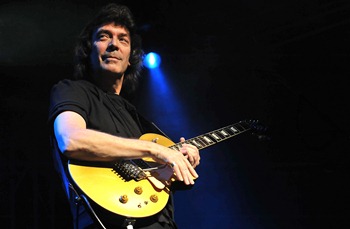
Photo : Lee Millward
MM : Tunes such as “…In That Quiet Earth” and “A Tower Struck Down” are instrumental songs. Obviously, without lyrics, it must be difficult to express the message to the listener. On the other hand, that also creates more imagination for the listener. How do you view the roles of such instrumental songs on this album?
SH : When I was a boy I listened to instrumentals from Ravel’s Bolero to the Shadows. I think a great melody is not only dependent on vocals. Sometimes instrumental music leaves extra room for the imagination.
MM : John Wetton, also participating in the 1st Revisited album, shows us a great performance of emotional singing on “Afterglow”.
SH : Yes, John has a marvelous voice. I loved him with King Crimson and his voice just gets better and better. He sounds great singing Genesis material because he has so much heart and feeling in his voice.
MM : In a previous interview on the SQUACKETT project, you mentioned you were using a FERNANDES guitar, YAIRI nylon string guitar, ZEMAITIS 12 string, and a CORAL sitar guitar for the recording, through a SANS AMP into your LOGIC PRO system. Did you use the same gear for this recording?
SH : Yes I did. I also used additional instruments, such as a Yairi six string steel and a 1957 Les Paul electric guitar.
MM : With the development of technology, recording situations have changed drastically. Musicians can record without using actual amps, with software and plug-ins that simulate amp sounds on your computer. What is your personal perspective on the latest recording environments?
SH : The latest recording environments give you more options. You can use vintage gear but you have additional ways to get a great sound and also to explore new roads. For instance, the new sustainer pick ups can make the guitar scream like an Irish ghost and sustain, so it takes off like a spaceship!
MM : You are planning on a Genesis Revisited Tour in 2013. What kind of show will the fans be able to expect? Will you have any of the musicians participating on the album taking part on the tour as well?
SH : I’m planning a special Genesis Revisited show which involves favorite Genesis tracks and features Roger King, Rob Townsend, Gary O’Toole, Lee Pomeroy, and Nad Sylvan on vocals as well as myself. We’ve all participated on the album.
MM : Please give the Japanese fans a message, regarding the “Genesis Revisited II” album.
SH : I hope my Japanese listeners enjoy the album as much as I did making it. I look forward to seeing you all on tour in 2013!
Steve Hackett Official Site : http://www.hackettsongs.com/
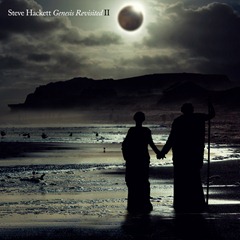
Genesis RevisitedII / Steve Hackett
IECP-20218/219 \ 4,410 WHD Entertainment
Disc 1:
1.The Chamber of 32 Doors
2.Horizons
3.Supper’s Ready
4.The Lamia
5.Dancing with the Moonlit Knight
6.Fly on a Windshield
7.Broadway Melody of 1974
8.The Musical Box
9.Can-utility and the Coastliners
10.Please Don’t Touch
Disc 2:
1.Blood on the Rooftops
2.The Return of the Giant Hogweed
3.Entangled
4.Eleventh Earl of Mar
5.Ripples
6.Unquiet Slumbers for the Sleepers
7.In That Quiet Earth
8.Afterglow
9.A Tower Struck Down
10.Camino Royale
11.Shadow of the Hierophant
